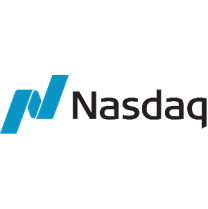Homer Simpson June 27, 2025
Debate sobre NDAQ
Puestos
38Here is the breakdown for the May CPI, in one chart
The CPI US Consumer Price Index rose to 2.4% in May 2025 for the first time in four months, up from a low of 2.3% in April 2021, although it was below the expected 2.5%. On a monthly basis, the CPI rose by 0.1%, which was below both the previous month's figure of 0.2% and the expected 0.2%.
Food prices rose by 2.2% year-on-year, following an increase of 2.8% in the previous month. Energy costs fell by 3.5% year-on-year, following a fall of 3.7% in April. Energy prices fell by 1.0% on a monthly basis.
Prices for used cars and trucks rose by 1.8% year-on-year, following a rise of 1.5% in the previous month. Housing costs rose by 3.9% year-on-year, following an increase of 4.0% in April.
The annual core inflation rate, which excludes the volatile food and energy sectors, remained steady at 2.8%, the lowest level since 2021 and below the expected increase to 2.9%. The monthly core CPI also rose by 0.1%, but remained below the 0.2% in April and the expected 0.3%.
$DAX
$NDAQ (-2,85 %)
$SPY (-3,04 %)
$NVDA (-6,14 %)
$BTC (-0,81 %)
$MSFT (-3,3 %)

HennRes | CTA Positions
CTA clearly indicate that they are cautiously bullish on S&P500 & $NDAQ (-2,85 %) . The position is up 0.16%. The 1 month percentile is at 1, which was the highest level since last month. A cautious long position is opened.
Bonds look very long. The current position is 1%, which is also the highest level in a month. The value is also strongly long within 3 months (3MZ). The inflows in 10Y Treasuries point to a potential interest rate cut.
Looking at the dollar, the position is -3.22%, i.e. strongly short. The 1-year percentile is also at 0, which is historically the lowest value. A small indication that inflation is reducing the purchasing power of the dollar.
Gold is currently very strong at 3.91%. The rise is an indication that there is a risk of inflation.
Since I realize that a large number of people are not familiar with CTAs, I am currently working on a guide on how to interpret such values!

Nasdaq records highest price increase since 2001 📈📈
US stock markets $NDAQ (-2,85 %) Just reported their biggest daily rise since 2001, making today the third biggest day in the post-war period.
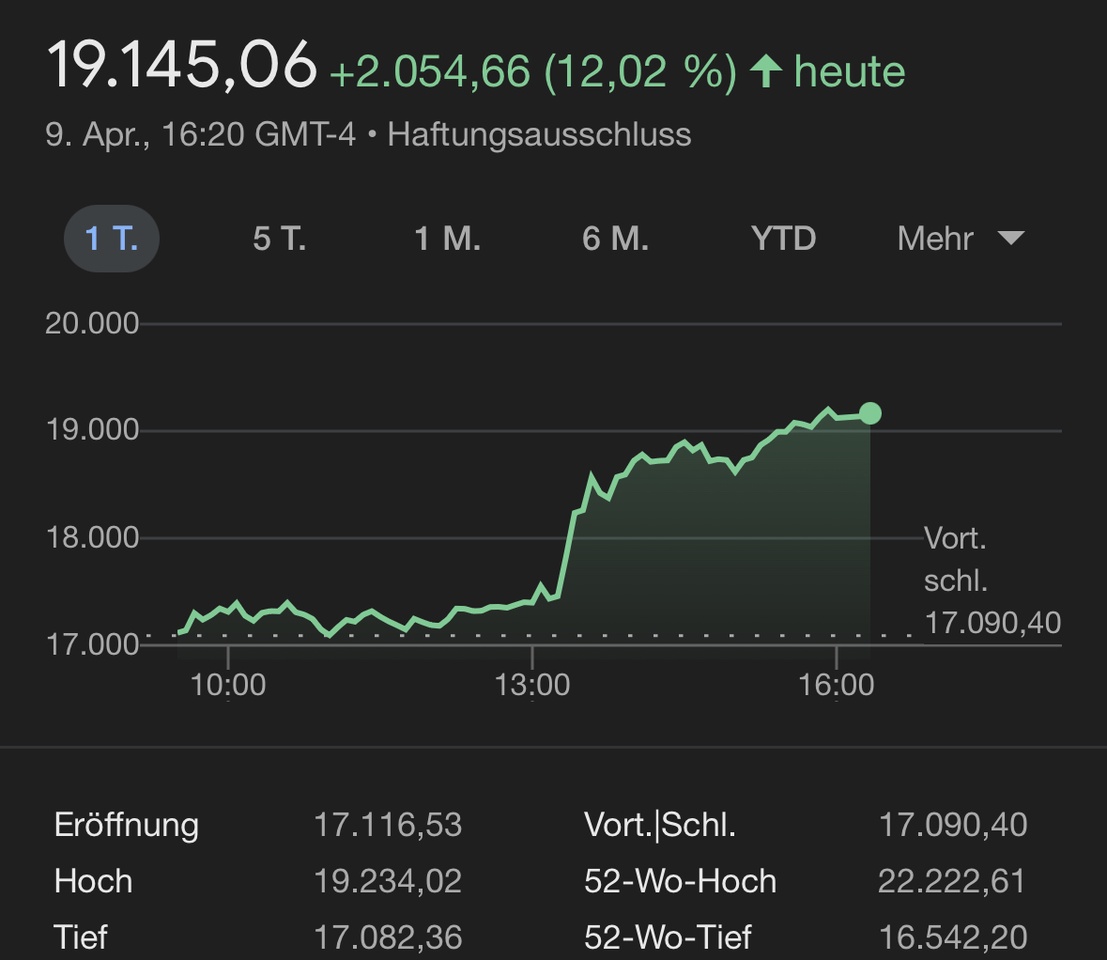
HennRes | Is the correction over?
1. economic fundamentals
As shown in Chart 2 the nominale US-Bruttoinlandsprodukt has risen by around 50% in the last five years, from around USD 20 trillion to USD 30 trillion. This increase was largely driven by expansive fiscal policy measures, strong consumption and inflationary effects. However, current indications suggest that political demands for lower inflation and reduced government spending could weaken this "boom". An end to the pace of nominal growth could limit long-term peaks in government bond yields, the US dollar and speculative asset classes.
Government spending and budget structure (Chart 11 & Table 1)
Chart 11 shows that cumulative US federal spending over the last twelve months amounted to USD 7.1 trillion. Compared to European countries, it is noticeable that the US invests a significantly lower proportion of its budget in education (4%), while spending on healthcare (27%) and debt servicing (13%) is prioritized. European countries such as Germany and France, on the other hand, dedicate larger budget shares to social areas such as education (13% and 11% respectively) and pensions (24% and 25% respectively).
2. technical market signals
Simultaneous decline in bond yields and equities (Chart 3)
Chart 3 illustrates the current pattern of parallel declines in 10-year US government bond yields and equities. $NDAQ (-2,85 %) . Such down-in-yields/down-in-stocks phases have historically occurred in crisis years such as 2000, 2002 and 2008. A key indicator for observation is the XBD-Broker-Dealer-IndexAs broker dealers are closely linked to the financial markets, the index is an important indicator of the health of the fin sector and general market sentiment.
Correction of speculative "Bro Bubble" stocks (Chart 4)
Like Chart 4 shows, one particular group, including$NVDA (-6,14 %) , $TSLA (-6,86 %)
$META (-5,02 %)
$ARKK (-5,94 %) , has fallen by around 25% since January 20, 2024. These stocks had previously gained 55% between the US election and the inauguration in January. The current decline indicates a reduction in risk, i.e. a switch to defensive sectors.
Capital flows and buy-the-dip mentality (Chart 14)
Despite the market volatility, Bank of America retail clients recorded the third-largest weekly inflows into equities in March 2024 since records began (Chart 14). This shows that many investors continue to focus on short-term recoveries.
3. sentiment and position indicators
Mixed sentiment in the Bull & Bear indicator (Chart 25 & 26)
An aggregated sentiment indicator (Chart 25 & 26), which takes into account factors such as hedge fund positioning, credit market techniques and capital flows, is currently in neutral territory (5.2 out of 10). A fall in the indicator to 2.0 would historically trigger a buy signal.
Cash allocation and high-yield bond spreads
The average cash allocation in portfolios recently rose to 4%, which is close to the threshold of 4.1% (Chart 25). At the same time, the risk premiums for US high-yield bonds (HY-Spreads) are at 340 basis points. A rise to 400 basis points could mark a low point. HY spreads measure the difference between the yields on high-yield bonds (junk bonds) and the yields on safe government bonds (US Treasuries). Narrower spreads (lower values) indicate a higher risk appetite on the part of investors, while wider spreads (higher values) indicate increased risk aversion. If the cash allocation rises above 4.1%, this could signal that the correction has bottomed out and a recovery is imminent.
4. historical comparisons and scenarios
Political uncertainty and real yields (Chart 5 & 13)
The Chart 5 (NFIB-Unsicherheitsindex) shows that small US companies are increasingly expressing concerns about tax and regulatory policy. The NFIB Uncertainty Index measures the uncertainty of small and medium-sized companies in the USA with regard to economic and political factors. A rise in the index indicates that companies are increasingly concerned about future developments. At the same time Chart 13 illustrates the inverse correlation between US real yields (10-year) and gold prices, which positions gold as a hedge against falling real interest rates. When real yields fall (due to lower nominal yields or higher inflation), gold becomes more attractive. When real yields fall, gold prices tend to rise as investors look for safe investments.
Summary:
The current market correction shows characteristics of a typical technical correction, but is not yet complete. Decisive signals for an end would be
An increase in the cash allocation to over 4.1% (Chart 25),
HY spreads of 400 basis points (Chart 3),
A stabilization of the XBD broker-dealer index above 750 points (Chart 4).
Historical comparisons suggest that the $SPY (-3,04 %) reaches a potential support zone at around 5,300 points. Political decisions, particularly on monetary and fiscal policy, remain a critical factor
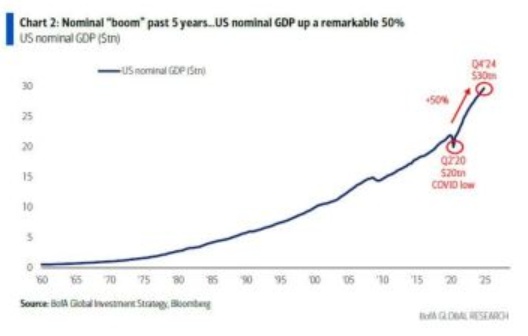
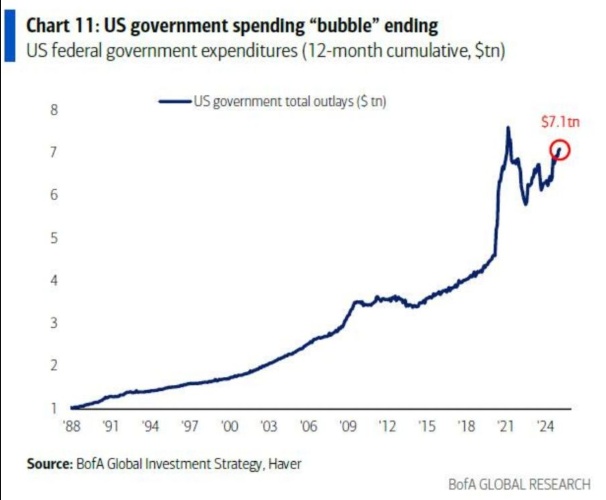
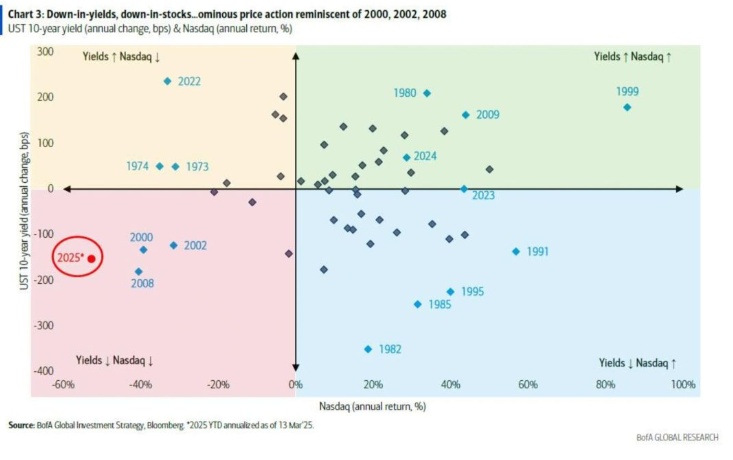
+ 5
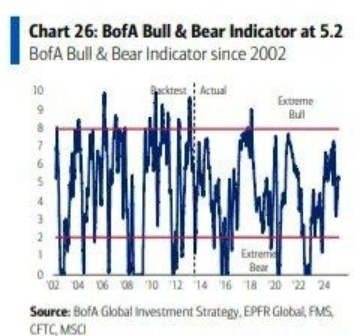
Shopping Time
As already posted privately, at least this part is also public. Did some shopping today:
In the last few days, there are apparently signs that the free fall is flattening out. We often see an area that is being approached again and is holding. So for me it was now time to initiate a new wave of buying :)
but: will it really turn now? We don't know... and who knows if the man on the other side of the Atlantic won't come up with something new
Nasdaq, Inc: Buckle Up for a Wild Ride in Finance!
Nasdaq, Inc $NDAQ (-2,85 %) – ever heard of it? Of course, you have! It's not just some stock exchange, it's the Nasdaq Stock Market, the second-largest in the world by market capitalization. But hold on tight, because Nasdaq is like a roller coaster of financial innovation, with twists and turns that'll make your head spin. They've gone from trading stocks to becoming a global tech titan, offering cutting-edge solutions for the capital markets. Think of them as the cool kids on the financial block, always pushing the boundaries and making things happen.
Read my full article on my website ! https://www.waver.one/p/nasdaq-inc-buckle-up-for-a-wild-ride

All of these shares reached new ALL-TIME HIGHS at some point today ⤵️
Nvidia $NVDA (-6,14 %)
Amazon $AMZN (-5,92 %)
Netflix $NFLX (-2,08 %)
Walmart $WMT (-0,92 %)
JPMorgan $JPM (-2,22 %)
Goldman Sachs $GOS0
Palantir $PLTR (-7,09 %)
Blackrock $BLK
American Express $AXP (-3,64 %)
Arista $ANET
Apollo $APO PR A
Blackstone $BX (-5,08 %)
Booking $BKNG (+0,36 %)
Instacart $INSTA (+0,18 %)
Caterpillar $CAT (-2,48 %)
Capital One $COF (-3,86 %)
Discover Financial $DFS
Electronic Arts $EA (-0,78 %)
GE Vernova $GEV (-5,3 %)
Hilton $HLT (-2,09 %)
Howmet $HWM (-3,03 %)
Interactive Brokers $IBKR (-5,42 %)
Cheniere $LNG (-2,16 %)
Morgan Stanley $MS (-3,39 %)
Marriot $MAR (-3,51 %)
Nasdaq $NDAQ (-2,85 %)
News Corp $NWSA (-3,06 %)
Oracle $ORCL (-3,03 %)
Palo Alto $PANW (-4,92 %)
ServiceNow $NOW (-3,24 %)
Steel Dynamics $STLD (-4,91 %)
Stryker $SYK (-2,46 %)
Royal Caribbean $RCL (-1,72 %)
Reddit $RDDT (-0,01 %)
Trade Desk $TTD (-5,03 %)
Visa $V (-2,33 %)
Wells Fargo $WFC (-3,48 %)
All these stocks hit new 52 WEEK HIGHS at some point today
Visa $V (-2,33 %)
Robinhood $HOOD (-9,88 %)
Delta Airlines $DAL (-3,96 %)
Trade Desk $TTD (-5,03 %)
DoorDash $DASH (-5,35 %)
United Airlines $UAL (-5,1 %)
Wells Fargo $WFC (-3,48 %)
Booking $BKNG (+0,36 %)
Abbvie $ABBV (-1,22 %)
Agnico Eagle $AEM (+1 %)
Alaska Airlines $ALK (-4,42 %)
Apollo $APO (-4,93 %)
Applovin $APP (-6,13 %)
Ares Capital $ARCC (-1,33 %)
Celestica $CLS (-7,11 %)
Coupang $CPNG (-4,08 %)
Corteva $CTVA (-2,74 %)
Carvana $CVNA (-9,59 %)
Duolingo $DUOL
Garmin $GRMN (-3,17 %)
Hilton $HLT
$ICE (-1,75 %)
Incyte $INCY (-1,88 %)
Leidos $LDOS (-3,56 %)
Live Nation $LYV (-0,32 %)
Madison Square Garden $MSGS (-2,11 %)
Nasdaq $NDAQ (-2,85 %)
Sprouts $SFM (-2,76 %)
Nuscale $SMR
Sharkninja $SN
Synchrony $SYF (-5,74 %)
Texas Roadhouse $TXRH (-3,15 %)
VF Corp $VFC (-6,23 %)
WellTower $WELL (-1,28 %)
Nasdaq Q3 2024 $NDAQ (-2,85 %)
Financial performance: Nasdaq generated net revenue of USD 1.1 billion in the third quarter of 2024, representing growth of 22% compared to the same period last year. Non-GAAP net revenue was $1.2 billion. Revenue growth was boosted by a USD 146 million benefit from the acquisition of Adenza. On a pro forma basis, net sales increased by 10%. Solutions revenue reached USD 872 million, an increase of 26 % compared to the previous year or 10 % on a pro forma basis.
Balance Sheet Analysis: Nasdaq's gross leverage ratio was 3.8x at the end of the third quarter of 2024, down slightly from 3.9x in the second quarter of 2024. The company has a well-spaced debt maturity profile, with total obligations of $9.858 billion.
Income Statement: GAAP operating expenses for the third quarter of 2024 were $698 million, an increase of 37% year-over-year, primarily due to the acquisition of Adenza. Non-GAAP operating expenses were USD 543 million, an increase of 21%. Non-GAAP operating profit amounted to USD 637 million with a non-GAAP operating margin of 54%.
Cash flow analysis: Operating cash flow in the third quarter of 2024 amounted to USD 244 million. The company paid out USD 138 million in dividends to shareholders and repurchased USD 88 million worth of shares. Free cash flow, excluding Section 31 fees, amounted to USD 1.137 billion year to date.
Key drivers and profitability: Non-GAAP operating margin improved to 54% in the third quarter of 2024, compared to 52% in the third quarter of 2023. Free cash flow conversion rate was approximately 92%.
Segment analysis:
- Market Services: Net revenue was USD 266 million, an increase of 13% year-over-year, driven by increases in US equity derivatives and cash markets.
- Solutions: Revenue amounted to USD 872 million, with strong growth in Index and Financial Technology.
- Financial Technology: Revenue increased by 71% year-on-year, reaching USD 405 million.
Competitive Analysis: Nasdaq maintained its leading market position in multi-listed US options and relevant Euro cash markets. The company continues to leverage its multiple platforms to drive growth across all business lines.
Forecasts and management commentary: Nasdaq updated its 2024 non-GAAP operating expense guidance to a range of $2.150 billion to $2.180 billion and its non-GAAP tax rate guidance to a range of 23.5% to 24.5%. The company is focused on reducing its debt and realizing synergies from recent acquisitions.
Risks and opportunities: The integration of Adenza presents both opportunities for synergies and risks related to restructuring costs and operational integration. In addition, the company is susceptible to market fluctuations and regulatory changes.
Summary and strategic implications: Nasdaq's strong financial performance in 3Q2024, driven by strategic acquisitions and organic growth, provides a solid foundation for sustainable growth. The focus on deleveraging and operational efficiency as well as robust revenue growth in key segments underscore the company's strategic direction. Nevertheless, Nasdaq must overcome integration risks and market uncertainties in order to continue its growth trajectory. This means continuing the good quarters and remaining a shareholder.
Positive statements:
- Sales growth: Nasdaq's net revenue in the third quarter of 2024 amounted to USD 1.1 billion, representing growth of 22% compared to the same period last year. Non-GAAP net revenue reached USD 1.2 billion.
- Solutions revenue: Solutions revenue increased 26% year-over-year to USD 872 million, driven by strong growth in Index and Financial Technology.
- Operating margin improvement: Non-GAAP operating margin improved to 54% in the third quarter of 2024, compared to 52% in the third quarter of 2023.
- Debt Management: Nasdaq has a well-spaced debt maturity profile, with total obligations of $9.858 billion. Gross leverage ratio decreased slightly to 3.8x.
- Market leadership: Nasdaq maintained its leading market position in multi-listed US options and relevant Euro cash markets.
Negative statements:
- Operating expense increase: GAAP operating expenses for the third quarter of 2024 amounted to USD 698 million, an increase of 37% year-on-year, mainly due to the acquisition of Adenza.
- Integration risks: The integration of Adenza poses risks related to restructuring costs and operational integration.
- Market volatility risk: Nasdaq is exposed to market fluctuations and regulatory changes, which could have a negative impact on its financial performance.
- High debt burden: Despite a well-leveraged debt profile, total obligations remain high at $9.858 billion.
- Increased amortization costs: The acquisition of Adenza resulted in additional amortization costs of USD 87 million on acquired intangible assets.
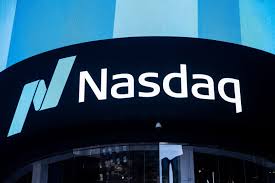
Valores en tendencia
Principales creadores de la semana
